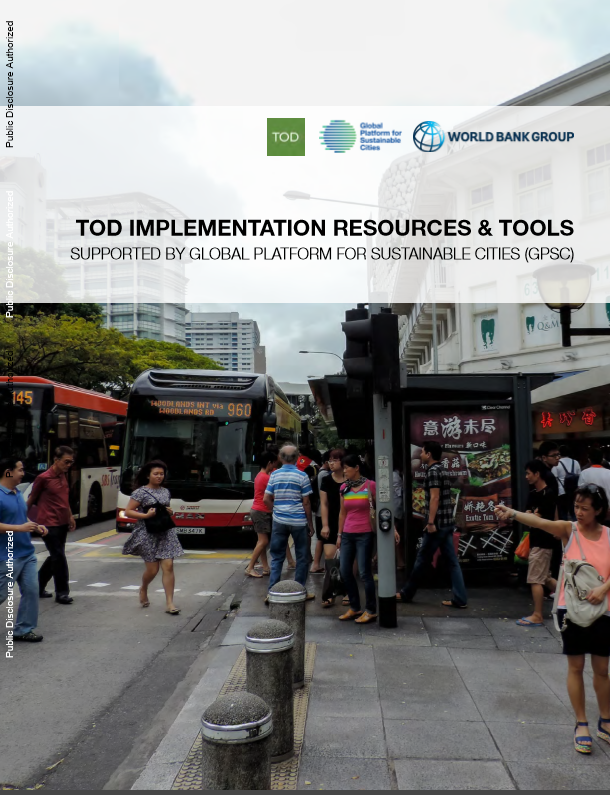
-
Published On
December 19, 2018
-
Author(s)
Global Platform for Sustainable Cities
Transit-oriented development, commonly known as TOD, is a planning and design strategy that focuses on creating urban development patterns which facilitate the use of public transit,walking and cycling, as primary modes of transport and which supports vibrant, diverse and livable communities. This is achieved by concentrating urban densities, communities and activities within a 5-10 minute walking distance from mass rapid transit stations (both bus and rail-based), developing quality urban space and providing convenient and efficient access to a diverse mix of land uses. TOD brings together elements of land use and transport planning, urban design, urban regeneration, real estate development, financing, land value capture, and infrastructure implementation to achieve more sustainable urban development. Since TOD implementation can be complex, it is essential that cities understand the dynamics at play related to all citysystems- real estate economics, transit routing, infrastructure design, land use planning and zoning, the development of the local economy through urban regeneration, and urban design- toachieve the concept’s full potential. TOD, as a tool, enables city actors to negotiate through varying urban priorities to ultimately prioritize inclusion and resilience in an optimized environment. The World Bank considers these priorities as the bedrock of successful TODs.
Please click here to read the report.
